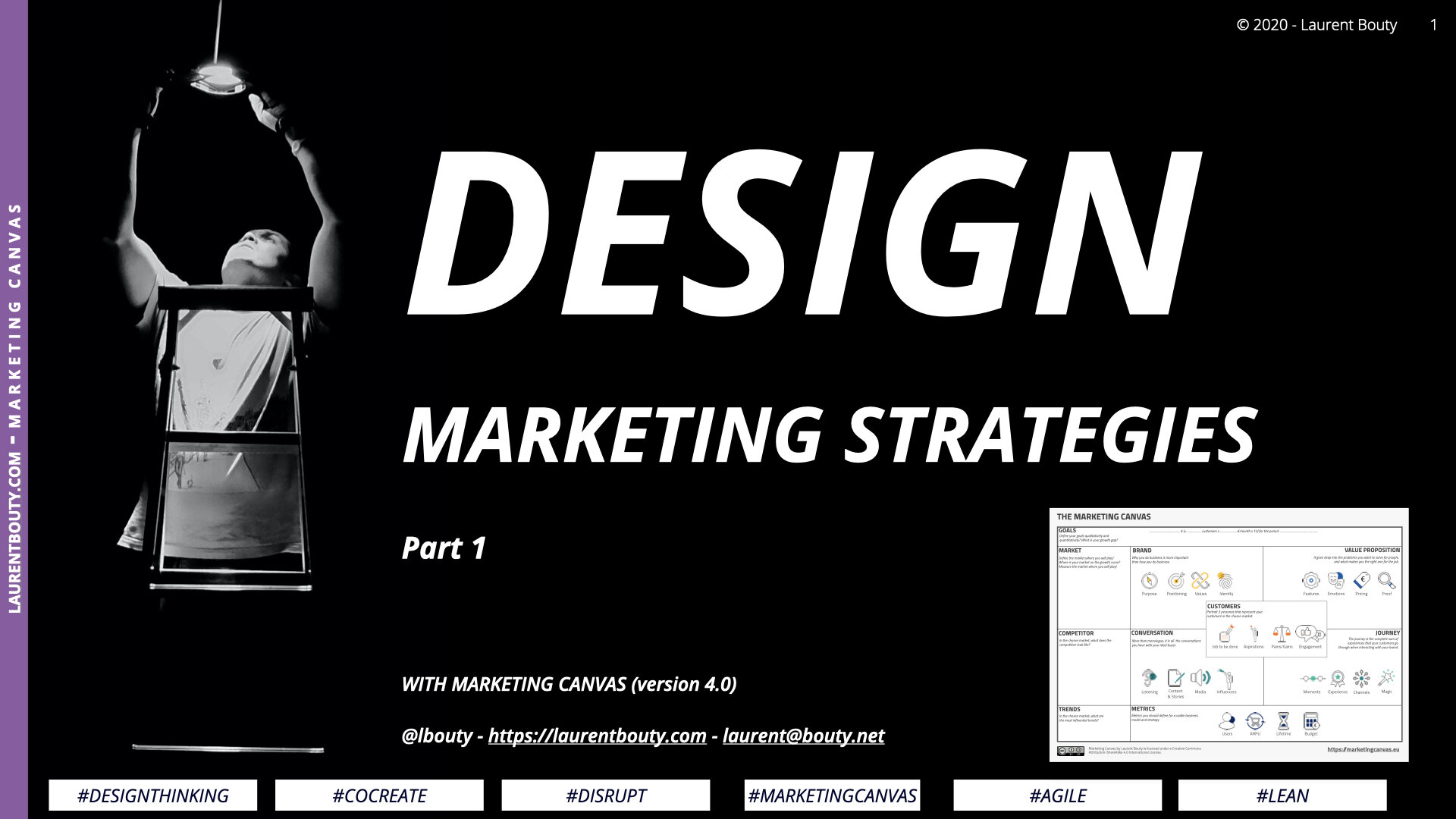Last update: 06/06/2023
In a nutshell
In this comprehensive guide, we explore the vital role of emotions in your value proposition and how they can significantly enhance your brand's market potential. By understanding and leveraging the power of emotions, you can create a unique value proposition that deeply resonates with your customers and sets you apart from your competition. We delve into defining emotions, using tools to harness them effectively, translating them into actionable strategies, and methods for evaluation and improvement. We provide a clear scoring system to assess the effectiveness of your emotional value proposition and offer insights to improve your score, regardless of where you currently stand. We also demonstrate the application of these principles through a 'Green Clean' use case. By aligning emotions with your brand's purpose and positioning, you can build a compelling value proposition that ensures sustainable business growth.
In the Marketing Canvas
The Marketing Canvas is a powerful tool for entrepreneurs and non-marketers to build a robust marketing strategy. It consists of six meta-dimensions, each with four sub-dimensions, for a total of 24 sub-dimensions defining your Marketing Strategy. One of these sub-dimensions is EMOTIONS, which falls under the VALUE PROPOSITION meta-category.
Defining Emotions
Emotions, also identified as Emotional benefits or the Emotional Selling Proposition (ESP) in your value proposition, play a significant role in connecting with your customers. In understanding emotions, we venture into the territory of intangible aspects that influence the decision-making process of your customers. The critical question remains: Are your offerings resonating with the emotional needs of your customers? If the answer is affirmative, you have a golden opportunity to add extraordinary value through the emotional dimension of your value proposition.
In an enlightening piece titled, "The new science of customer emotions", researchers delve into the idea of an "emotional connection pathway". Customers grow more valuable at each step of this predictable pathway: starting from being unconnected, moving on to being highly satisfied, then recognizing brand differentiation, and finally reaching a stage of being fully connected.
In devising your Marketing Strategy, your Value Proposition should be an enticing blend of tangible Features and intangible Emotions. Emotions, when harnessed correctly, could be your stepping stone away from the dreaded commoditization. Emotional benefits heighten the perceived value of your offerings, which can in turn enhance your pricing power and ultimately your profit margins. This notion holds equally true in the B2B market.
The Emotions conveyed in your Value Proposition must echo with the social and emotional aspects of the 'Job To Be Done', and harmonize with your customers' Aspirations, your revenue goals, and your core Purpose. If the Market is at a specific stage, like the product stage, your sights should already be set on the next level, like Service, to create additional value.
Your inability to address the social, emotional, or aspirational needs of your customers might act as a roadblock in maximizing the value potential of your offerings. Such inconsistency with your purpose and vision could hinder revenue generation.
Tools for Emotions
To address and leverage the emotional dimension in your value proposition, several tools and techniques can be employed. One of the most effective tools is 'Emotional Mapping'. This technique involves mapping your customers' emotional journey throughout their interaction with your product or service. It helps to identify their feelings at each touchpoint and aids in improving their overall emotional experience.
Another tool is the 'Emotional Value Proposition Canvas'. It assists in visually illustrating how your product or service can fulfill the emotional needs of your customers, further enabling you to create a compelling emotional value proposition.
Lastly, 'Sentiment Analysis' is a useful tool for gauging customers' emotions regarding your brand or offerings. It analyses the emotions expressed in online reviews, social media comments, or other user-generated content, providing insights into your customers' emotional responses.
Translating Emotions into Action
Understanding and addressing the emotional aspects of your customers is the first step. But translating these into actionable strategies is where the real value is generated.
Start by clearly defining your customers' emotional jobs to be done. These are the emotional needs or aspirations your customers are trying to fulfill when they interact with your brand or offerings. Ensure that these emotional jobs are factored into your overall value proposition.
Once you have a firm grasp of your customers' emotional needs, align your offerings, messaging, and overall brand persona to cater to these. Use storytelling to appeal to these emotional needs - stories resonate and stay with people, hence making them an effective tool for building an emotional connection.
Another critical step is training your staff to understand and respond to customers' emotional needs. This applies to everyone in your organization, from front-line staff to those working behind the scenes.
Evaluation and Improvement
The evaluation of your emotional value proposition is vital in identifying your strategy's effectiveness and recognizing areas for improvement. Here, we use a simple but effective scale ranging from -3 (completely disagree) to +3 (completely agree) on the following statements:
Your value proposition encompasses all the core emotional benefits required by the category.
Your value proposition offers a few emotional benefits that distinguish you from your competitors.
Your value proposition provides a unique emotional benefit, which is the principal reason customers choose you.
The emotional benefits within your value proposition align with your brand purpose and positioning.
Now let's delve into what these scores might signify:
Score -9 to -3: This range indicates that your emotional value proposition might be significantly misaligned with your customers' needs and expectations. There is an urgent need for a comprehensive review and re-evaluation of your strategy. You should revisit your understanding of the emotional jobs to be done and realign your emotional benefits to fulfill these needs.
Score -2 to 2: This score suggests that while you've made some headway in creating emotional value, there's still room for improvement. Try to identify the gaps in your current proposition, be it a lack of unique emotional benefits or inconsistencies between your emotional benefits and your brand's purpose. Developing a deeper understanding of your customers' emotional journey and refining your messaging could be key areas to focus on.
Score 3 to 6: A score in this range signifies that your emotional value proposition is fairly aligned with your customers' needs and your brand's purpose, but it lacks a distinctive edge. While you are ticking the basic boxes, there's a need to discover that unique emotional benefit that can set you apart from your competitors. Consider looking at innovative ways to deliver emotional value and memorable experiences.
Score 7 to 9: This is the ideal range, indicating that your emotional value proposition is strong, unique, and well-aligned with your customers' needs and your brand's purpose. However, remember that markets and customer expectations evolve over time, so continuous evaluation and adjustments are necessary to maintain your score within this range.
Evaluation and improvement are continuous, iterative processes. The aim should not just be to achieve a high score, but to consistently stay in the high-scoring range by continually aligning your emotional value proposition with your customers' evolving emotional needs. This approach can enhance your value, strengthen customer relationships, and boost your profitability.
Green clean use case
Let's take the example of Green Clean, an environmentally friendly cleaning service. The company's value proposition is not just about providing cleaning services but also promoting a healthy environment and home.
The emotional benefit Green Clean offers resonates with customers' desires for a clean, healthy living space and their aspiration to contribute to a greener planet. Their emotional job to be done isn't just about cleanliness, but also about feeling good for making environmentally responsible choices.
Green Clean addresses these emotional jobs by offering top-notch cleaning services using environmentally friendly products. Their branding and messaging revolve around promoting a healthier planet, which resonates deeply with their target audience's emotional needs and aspirations.
Conclusion
In conclusion, the emotional dimension of your value proposition is not a peripheral element, but a crucial component that can substantially influence your customers' perception and decision-making. The ability to appeal to customers' emotions effectively can set you apart from the competition, enhancing the value you deliver and positively impacting your bottom line.
Remember, customers are not merely buying your product or service; they are buying into an experience, a story, and the emotions tied with it. By understanding and addressing their emotional needs, you can create stronger bonds with your customers, which can lead to higher customer satisfaction, loyalty, and ultimately, higher revenues.
Read Next
How to price your product? Read Marketing Canvas and Pricing
Sources
Market and Economic Value, Laurent Bouty, https://laurentbouty.com/blog/2019/marketing-canvas-market-and-economic-value
Harvard Business Review, 2015, The new science of customer emotions
Harvard Business Review, 2018, The B2B elements of Value
Marketing Journal, 2018, The elements of Value
More on the Marketing Canvas
Marketing Canvas by Laurent Bouty





































